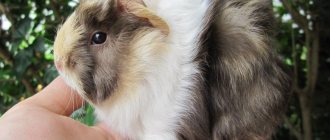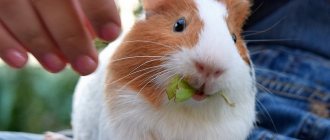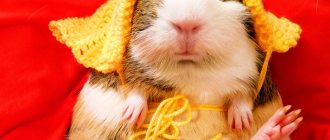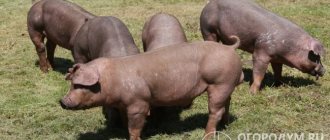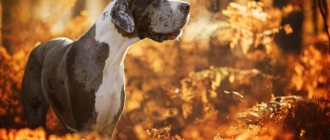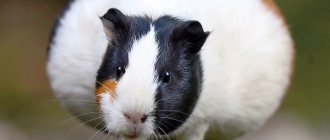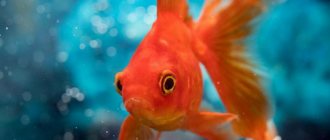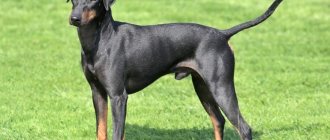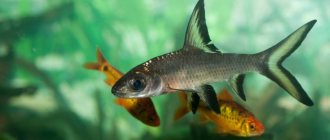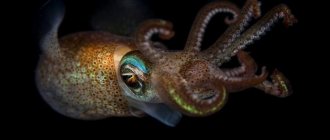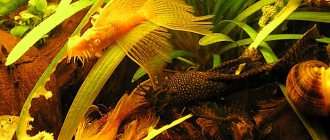What future owners need to know about hairless guinea pigs. How to properly care for this breed and what are its maintenance features. Advantages and possible disadvantages of hairless animals. Care, feeding, hygiene, bathing. Skinny breeding, pregnancy and childbirth.
Guinea pigs make you fall in love at first sight; they are cute animals that you want to pick up, play with, and caress. They are very friendly and become pets that give joy and a lot of positive emotions. Now there is an opportunity to purchase a rather exotic type of guinea pig - skinny or baldwin.
These guinea pigs are hairless, which attracts a lot of attention to them. Let's look at these breeds in more detail, and also find out how the bald guinea pig differs in maintenance and care, and get acquainted with the advantages and features of these animals.
Breeding history
First of all, it is worth saying that these breeds today are distinguished by their high cost. This is due to the fact that there are quite a few nurseries that specialize in their breeding, and the price is also affected by difficulties in finding individuals of this breed.
It is also worth mentioning that the Skinny and the Baldwin are two different breeds, the similarity of which lies in the absence of hair, in other words, they are hairless. It just so happened that these two breeds are not separated and all hairless animals are called skinnies. In the photo we can see that Baldwins have no hairs completely, while Skinnies have them on their paws and nose.
Canadian scientists have been breeding for many years; a huge amount of research and experiments have been carried out until they managed to create such an amazing breed, which is experimental. In 1976, we also learned about these cute hairless animals, but American breeders to this day do not recognize rodents as a separate nosological group.
At the initial stage of development, individuals of this breed were albinos, and also had red gasps. But after some time, we managed to get a variety of colors of the animals, black, brown and even pink, and the color of the eyes also changed.
Breeders are still working on breeding today and are not going to stop their work, because they want to get livestock that would have a good gene pool. After all, as we all know, skinnies are not the owners of good health, and all for the reason that frequent inbreeding was allowed.
Regarding the name Skinny, it is not entirely clear where it came from, because if we look at the literal translation, it means “bones covered with skin,” but these plump little animals cannot be called skinny, this can be seen in the pictures.
Regarding the “hairless” gene, it is recessive, which means that when crossing a hairless pig and a long-haired one, the offspring will be “woolly”. But, the offspring of such a crossing will have a “bald” gene, therefore, under certain conditions, it can produce naked children.
Another variety of bald animals is the Baldwin; this population is much younger, no more than 20 years old. It appeared due to a natural mutation, but breeders decided to fix it.
Skinny look
The body length of an adult does not exceed 35 cm. Weight is about 1 kg. Females are much smaller than males.
The skin is soft and delicate, reminiscent of velor to the touch. Skinny, unlike Baldwin, is not completely hairless. There is a barely noticeable fluff on the body of the animal, and short and thin hairs cover the muzzle and paws.
The animal's head is large and classically shaped. The eyes are large and expressive. The color of the iris is determined by the color of the skin; it can be red, burgundy, red-brown, dark brown, black. The ears are round and widely spaced. The neck is short, thick, and muscular. The body is strong and prominent. The chest is quite voluminous. The belly is rounded. There is a tail, but due to the small size of the caudal vertebrae it is almost invisible. The color of the skin can be very different, both monochromatic and multi-colored.
As a result of inbreeding, representatives of the breed often exhibit physical defects. The most common diagnoses are curvature of the spine and limbs, short torso, and irregular skull shape. Such defects in most cases do not interfere with the full life of the animal, but a defective individual should not be allowed to reproduce.
Description and features
Speaking about the external characteristics of these two breeds, it is worth noting that they are very similar to each other and only professionals can find the differences, so there is no point in considering them.
Many of us believe that if an animal is naked, it means that there is no fur on it, but this is not entirely the correct opinion. The fact is that they also have wool, but it is a slight hairiness, which rather resembles soft fluff, and is classified as skinny. This fluff covers the neck, shoulders and head.
There are differences in the skin of animals, namely, to the touch the skinny body resembles velor fabric, very delicate. But Baldwin leather feels a little different to the touch; it is compared to warm and very soft rubber.
It is also worth noting that these breeds are often chosen by people who suffer from allergic reactions to wool. In this case, you can have a cute pet and not worry about side effects, for this reason they are often called hypoallergenic.
They have a fairly large head. Muscular body, rounded tummy, small tail, which is almost invisible. Their body shape resembles a ball.
On the head there are wide-set ears with a figured edge, slightly convex large eyes, their color matches the color of the rodent. The neck is quite short and wrinkled. The paws have very mobile fingers, with their help it holds food perfectly.
Hairless guinea pigs: history of the origin of breeds
The appearance of hairless breeds is caused by a gene mutation. A recessive gene found in hairless animals can be suppressed by a dominant gene. That is, in the event of a “meeting” of a mutating gene and a dominant one, the animal does not go bald, but is a carrier of this mutation. This mutated gene can affect the presence of hair in piglets in subsequent offspring.
Skinny Guinea Pig
The first hairless skinny guinea pig appeared by chance in a laboratory in Montreal. In this laboratory they were engaged in the selection of these rodents. In 1978, three females gave birth to babies from the same male, which were different from the usual newborn guinea pigs. They were completely bald. It was not possible to use these hairless cubs for further breeding. They were weak and soon died.
After 6 years, the incident with the birth of naked individuals was repeated. This time, the breeders managed to study the piglets and, with their help, develop a new breed. The founder of the breed was named Skinny. He gave the name to the whole breed.
The first naked pigs were all albino, that is, they had red eyes and white skin. But as a result of crossing, it was possible to obtain animals with different skin colors.
Baldwin Guinea Pig
The Baldwin breed was created in the same unusual way. 10 years later, American breeder Carol Miller gave birth to cubs during crossing. The cubs were born with fur, but by the end of the first seven days the pig had shed all its fur. The owner was afraid that the pets were sick, but they were active, growing, like their “hairy” peers, and an examination by a veterinarian revealed no signs of illness. Afterwards, the breeder again crossed the parents of the bald pigs and got the same result. So she developed a new breed of Baldwin guinea pig.
Arrangement of the house
Experienced breeders advise using a large terrarium as a home for rodents. The pet should not only feel comfortable in it, but also be quite spacious, so the minimum size should be at least 0.5 sq.m. Sometimes ordinary aquariums are used as a house.
All side walls must be transparent, the animals need to see what is happening around and observe those around them, in addition, the owners must also observe their pets. A deep tray is installed at the bottom, usually made of plastic.
Of course, the animal needs bedding, which is made from sawdust. But wood filler cannot be used; the fact is that it has quite sharp edges that can injure the delicate skin and paws of a rodent.
The location for installing the house is chosen in such a way that there are no drafts, passages, or direct sunlight. They are very afraid of drafts and hypothermia, which can greatly harm their health.
Arrange the animal's house in such a way that under no circumstances will it be able to get out of it. Injuries sustained from a fall can have permanent consequences and lead to death.
The most dangerous injuries include:
- Limb fractures.
- Spinal fracture.
- Bruises of internal organs.
- Intestinal rupture.
If the sides of the house are not high enough and there is a risk that the animal could get out, you can install a net on top.
In the terrarium you need to install a drinking bowl for water and a feeder for food. In addition, houses made of wood or cardboard, manholes, tunnels, and toys are installed to make the guinea pig interesting, fun and comfortable.
Behavior
These are very cute and affectionate animals, absolutely non-conflicting. Emotionally sensitive, if there are puppies or kittens in the house, rest assured that they will become best friends, guinea pigs will snuggle up to them. They also become very attached to their owners, seek affection from them, and can simply sit in their owner’s arms for a long time.
They are inquisitive and active, so they will want to explore the apartment and all the nooks and crannies. They are sociable and highly socialized pets, for this reason they are often chosen as gifts for children.
Description of the Kui breed
Giant pigs are the second large relatives of ornamental cavias, which have a similar structure, although they are inferior in size to large capybaras. Guinea pig cubs of this breed weigh only one hundred to one hundred and fifty grams. Already from three months, female kuya can give birth to offspring. The body structure is similar to that of a decorative guinea pig: the animals have a characteristic head with intelligent eyes, rounded ears, as well as a short neck and muscular chest.
Lifespan
All Kui pigs have a short life span: no more than three years. This is due to their tendency to heart diseases that develop against the background of obesity. Excessive load on the animal's cardiac system and skeleton leads to joint problems.
The life of rodents can be increased through selection. With proper care, the pet can live up to six years. But such a figure is more likely an exception to the rule than a pattern.
Appearance and dimensions
This species of guinea pig has a massive skeleton and a wide skull. Quite often have extra fingers: this defect is called polydactylism. The unique feature does not bother the animal at all. Representatives of this breed weigh from one and a half to four kilograms. The tail is completely absent. The length of the body of the kui is about forty centimeters.
As a result of selection, two subspecies of kui were bred:
- Creole (distinguished by a wide forehead, elongated muzzle and innate nervousness);
- improved (they have a wide skull with a massive forehead, such animals rapidly gain weight and by the age of six months can weigh up to four kilograms).
Content Features
Since these animals have no fur, it is worth understanding that they require special care.
The following rules must be observed:
- Due to the lack of fur, the animals are very afraid of the cold; the temperature regime in the room must be observed. The minimum permissible temperature is 22°.
- No matter how surprising it may sound, bald animals need more food, 2 or even 3 times more than their furry counterparts. This is required in order to maintain normal body temperature, which depends on increased metabolism.
- The animal’s skin also requires special care; in order to prevent dryness and flaking, it is necessary to lubricate it with baby cream from time to time.
Regarding bathing, many breeders do not recommend bathing guinea pigs at all, regardless of breed. With bare rocks everything is much simpler; occasionally the skin can be wiped with a damp cloth and that will be enough.
If the area is very dirty, you can use shampoo on it, but it must be specialized. Cutting your nails is no different; you need to do this procedure regularly to prevent overgrown nails.
Hairless guinea pigs are considered very clean and not smelly, but it is worth remembering that a lot depends on the person; if you do not regularly clean their home, there is a very high probability that an unpleasant “aroma” will soon appear.
Once every 3-4 days, cleaning is required, during which the tray is washed and the litter is changed to clean and dry. Once every 2 weeks you need to carry out general cleaning, wash the entire terrarium, disinfect it and all accessories (drinker, feeder, accessories, toys).
What should the diet be like?
Unlike its furry counterparts, this breed spends a significant amount of energy on its own heating and requires a lot of food. For example, the sphinx absorbs food 2-3 times more than its furry counterpart. This leads to overeating and obesity
Based on this, completeness and frequency of nutrition (2 times a day) without overfeeding is of particular importance.
Proper feeding consists of a balanced diet, namely:
- hay, fresh grass – 60%;
- solid feed – 20%;
- succulent feed -20%.
The pigs' menu necessarily includes fresh vegetables, fruits, sprouted oats, and wheat. To strengthen the immune system, the animal should be provided with the dose of vitamin C required for its age. This could be adding 150 ml of ascorbic acid to drinking water, consuming parsley, dill, cabbage. The coot should be treated to a piece of sugar every week.
It is important to supplement the diet with vitamins, feed additives with micro- and macroelements, small doses of chalk and table salt
Feed your guinea pigs correctly and they won't get sick
Free access to fresh water for drinking should also be provided. It should be changed three times a day (in summer - up to 5 times).
To grind off sharp teeth, a branch of a fruit tree is placed in the house.
A branch of a fruit tree should always be present in the terrarium. grinding down your sharp teeth.
Feeding of the following products is excluded:
- food of animal origin (meat, milk, etc.);
- onions, garlic, radishes, mushrooms, nightshades;
- spicy, fatty, salty, sweet.
How to choose a skinny and how much the animal costs
It’s worth mentioning right away that this breed is not cheap, they are quite rare animals, and therefore their cost is higher. For one individual, breeders set prices from 19 to 38 dollars.
If you decide to purchase just such a breed, then spend a little time finding a reliable and trusted nursery, this way you will protect yourself from buying an unhealthy rodent.
When we purchase furry animals, the condition of the fur can tell us about its health. In a healthy rodent it is shiny, smooth, without any bald spots. But in the case of buying a skinny, we cannot rely on these criteria, so we need to pay attention to other signs that indicate good health:
- The guinea pig should be active and mobile.
- There should be no discharge on the eyes.
- There should be no nasal discharge.
- Paws are clean and dry.
- Moderately well-fed.
- The skin should be smooth and clean, without any damage or inflammation.
- The area near the anus should be clean.
Remember that despite her friendliness and love for attention and affection from a person, she needs rest. Therefore, you do not need to constantly hold her in your arms, give her time to rest so that she can rest and not suffer from excessive attention.
Skinny care
Caring for a hairless breed is made easier by the fact that the pig does not need to be constantly brushed; it does not shed. To prevent the pig from scratching its delicate body, you should not leave objects in the cage that could injure the animal.
You should trim your rodent's nails regularly. Otherwise, there is a danger that the animal will scratch itself. Since Skinny's immunity is low, the wound will take a long time to heal.
Every three to four weeks, the animal’s ears are carefully cleaned and the eyes are washed with clean boiled water using a cotton swab.
Skinnies should only be bathed as a last resort if there is severe contamination. To maintain cleanliness, the animal is regularly wiped with a damp cloth.
Pros and cons of content
You can argue for a long time about which breeds are better, bald, smooth-haired or long-haired, but no matter how long this dispute lasts, no one will win, since each breed has its own advantages, just like some disadvantages, let's consider the pros and cons Skinny more details.
| pros | Minuses |
| Takes up very little space | Quite high maintenance |
| Gentle and friendly character | Requires more food than other breeds |
| Quickly gets used to people, loves to be held | May have a specific odor, often in males |
| Long life expectancy | Room temperature must be maintained |
| Original appearance |
Baldwin
Appearance
This breed is the result of a mutation of the American Crested pig. The animal has folds on the shoulders, head and in the place where a fur comb could form.
The body is graceful, the back is straight. The head is small, slightly elongated in front. The neck is short.
The eyes are black, round, large. The nose is slightly dented inward. Like other members of the Pig family, this breed has a muzzle that resembles that of a pig. Their color depends on the color of the skin. The paws are straight, with movable toes.
Colors
Baldwins have different colors. Most often, one-color rodents (black, light pink or red) are found in pet markets; less often, two-, three-, or four-colored animals are found.
Feeding rules
So, as already mentioned, these animals need more food due to increased metabolism, but you cannot overfeed the animal, as this will immediately lead to obesity.
For them, there are certain dietary norms, according to which the animal should eat as follows:
- Hay and grass – 60%.
- Vegetables, root vegetables, tubers – 20%.
- Grain feed – 20%.
Of course, the diet should be varied so that the animal receives all the necessary vitamins and microelements. Breeders recommend giving pets additional supplements, vitamins, chalk, and a little salt, but all these elements must be carefully calculated in dosages so as not to harm the health of the rodent.
Water is very important for them; you should ensure that it is always clean and fresh. They change it twice a day, sometimes more often, because pieces of food and hay get into it. Also, make sure that the animal always has a twig in its house on which it will grind its teeth. Suitable from a fruit tree.
Remember, when an animal does not receive food for two days, it leads to their death. This is due to the characteristics of the intestines and digestive tract. It is forbidden to give radishes, mushrooms, garlic, nightshades to animals.
How to feed?
This breed, and all pigs, are recommended a natural diet: a large amount of vegetables and fruits, fresh grass and grain, hay, small branches of trees and shrubs should also be present. The diet should include specialized food, but in small quantities, you need to be careful with it. Because it can cause your pet to become obese.
Throughout the year, the animal should eat a good and balanced diet. In the summer, you can stock up on the necessary products for the winter and freeze them. It is necessary to dry the twigs and grass so that the diet includes hay. In addition to food, clean water should always be present. Some owners sometimes give their pet tomato juice. They also make compotes from rose hips. This version of the drink is not only tasty, but also healthy.
Character
These are very kind, friendly and affectionate animals who want to receive love and affection, but also give it in return. Some consider them to be very energetic and even fidgety, but they are very interesting to watch.
You don’t have to worry that they will wake you up at night and keep you from sleeping. They are also diurnal, but even during the day there is no noise from them.
They need attention from a person, without receiving it, they suffer and yearn. If you are a busy person and have minimal free time, be sure to get a couple of guinea pigs so that they do not suffer from loneliness.
Invisible dangers
Outwardly, these rodents seem to be quite large and strong animals, but in fact they are very delicate and fragile. A fall from a small height can lead to fractures and damage to internal organs, and intestinal ruptures are common.
Due to the fact that they have a considerable weight, a large load is placed on the paws, therefore elements such as calcium and phosphorus are very important in the diet; if they are deficient, the limbs will be bent.
Another enemy of animals is cold. They are very difficult to tolerate hypothermia and drafts. During the cold season, it is not recommended to take them outside at all. Caring owners buy them clothes and even sew them themselves, but they cannot completely protect them.
Character and behavior of hairless animals
Like their hairy relatives, these guinea pigs have amazing intelligence and developed empathy for humans. Calm and measured, they never show aggression towards their owner. You don’t have to endure the animal’s hysterical behavior; they prefer to spend their leisure time napping or entertaining games.
Guinea pigs simply love long sleep and are ready to make friends with your other pets and share their daytime rest with them. A distinctive feature of this breed is its extreme affection for people. The owner should not leave his own for a long time, much less forget about him. These rodents always feel sad from loneliness and can fall into a state of stress that can cause harm to their health.
The hairless breed of guinea pigs has a vulnerable character and a sensitive psyche, so you should not keep them in a stressful environment. Daily screams and human cruelty can lead to the early death of an animal that is unable to withstand such stress on the nervous system.
In addition, these animals have an amazingly developed intelligence, allowing them not only to immediately remember their nickname, but also to communicate with their owner, rising up to him on their hind legs. With the help of rewards, you can train your pet, but you should not get too carried away and tire him out with complex tasks.
Reproduction
There is no need to create special conditions for reproduction; everything is simple and easy. Females reach sexual maturity at the age of 2-2.5 months, males at 3 months. But here it is worth saying that at this age the body is not fully formed, it is quite weak, and the immune system is also not strengthened, so pregnancy at this age is not desirable, even dangerous. The optimal age at which mating is recommended is 6 months.
During pregnancy, vitamin E, B and others must be added to the diet to ensure the health of the mother and cubs. Nutrition should be correct and complete, but make sure there is no overfeeding. The duration of pregnancy is about 70 days.
During this time she needs separate housing. Try to protect her from stress as much as possible and touch her less. Handle only in extreme cases, do not squeeze, so as not to harm the fetus.
After giving birth, the female needs at least six months to fully recover, after which she can be bred again. At 6–8 months, the female is ready to continue the race. Males become sexually mature starting at three months. However, the optimal age for producing offspring is six months for females and 7 months for males.
